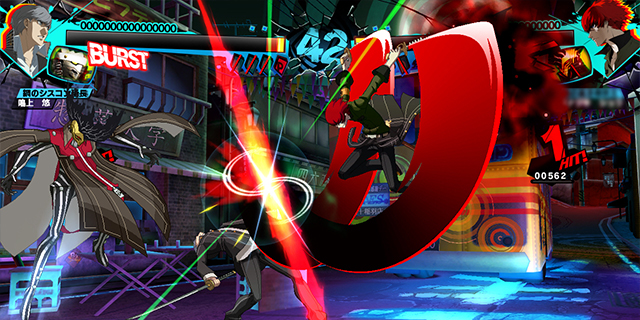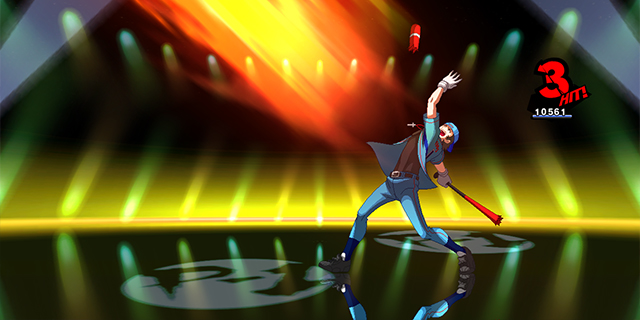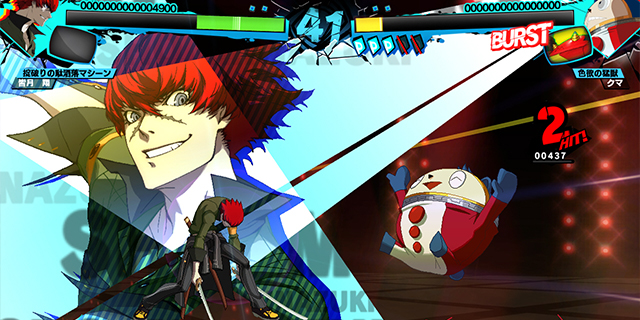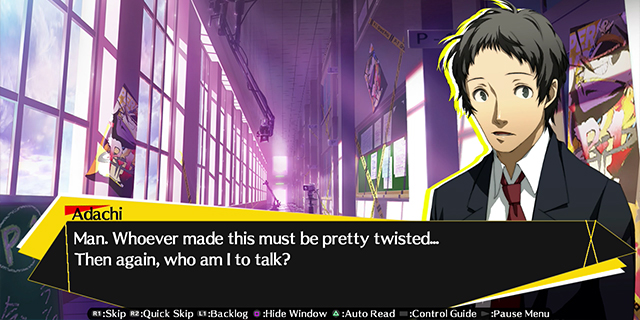
It’s almost been two years since Persona 4 Arena, and after the obvious sequel hint in the story, Persona 4 Arena Ultimax burst onto the scene in arcades and has now made it to consoles months later. Arc System Works ultimately proved that it could take a story-heavy RPG and create a fighter out of it successfully. Building upon an already strong foundation, was there really any more it could do to keep the next version fresh?
Ultimax’s story picks up several days after the events of Persona 4 Arena. Yu and the Investigation Team find themselves seeing the Midnight Channel airing once more, and the Investigation Team is challenged by General Teddie. Inaba is suddenly engulfed in a mysterious red fog that puts the whole town into a blackout. On top of this, members of the Shadow Operatives have been captured, and the end of the world seems to be imminent. The Investigation Team, despite being split up by the sudden events of the Midnight Channel, attempts to solve the mystery behind everything, as well as save new friends from the danger they’ve been thrown into. Unlike the last game, the game’s Story Mode is no longer split by individual characters and instead branched out by perspective, and new chapters are added during the completion after certain events.
Much like the first game, Ultimax’s story makes a lot of references to Persona 4: Golden. If you haven’t finished the story there, some parts might not make a lot of sense. It’s also full of spoilers, so be advised.

All the characters from the previous game make a return, and several characters from Persona 3 absent from the last game finally appear. Ken and Koromaru play as one character similarly to Carl in BlazBlue, Yukari is a ranged fighter using her bow and arrow, and Junpei retains his two-handed weapon fighting style but implements baseball moves into his repertoire. Additionally, Persona 4 support character Rise is now a playable character, and can now engage in battle using her analytical skills alongside her idol moves. Story Mode antagonists are also introduced as new fighters.
In addition to the larger roster, the new Shadow Mode increases the game’s variety. This allows certain characters to ditch most of their defensive options, such as Bursting and the Awakening Mode defensive boost, for a full-on offensive play style. These characters also retain their SP Gauge between matches, but lose the benefit of getting an extended SP Gauge after a certain amount of health has been lost. Shadow Frenzy is an exclusive ability to Shadow characters: when the player’s SP Gauge reaches 100 SP, they can activate the Burst command to use various Skill Boost attacks and SP Skills without any limits.

Score Attack has been completely revamped, offering various difficulty levels with several paths you can take. Toward the harder courses, your opponents gain crazy additional skills to make them harder than their normal selves. For example, Kanji’s command throw could deal twice the amount of damage it normally does, or Teddie’s Circus Bear Skill Attack could be enhanced to go across the screen three times, rather than the standard one. Challenge Mode makes a return, with some slight changes. For characters that do have a Shadow version, the first 25 challenges are all for the Normal version. The remaining five are for the Shadow version, featuring expert-level combos that put the offense-heavy Shadow form to use.
A new option for veteran players is the Golden Arena. Similar to BlazBlue’s Abyss Mode, it allows you to select a character and level up as you fight opponents, all while “traversing” dungeons recommended for certain levels. Every five levels, you face a boss character and potentially earn skills that can improve your chances in battle. If you’re not fighting someone else, either locally or online, you’ll be spending a lot of time within this mode.

On the surface, not too much changed in Ultimax, but internally the game feels a lot more balanced. With the addition of the offense-oriented Shadow version, as well as new characters to play and upcoming DLC to add even more, the game definitely retains more replay value than the first. If you were a huge fan of P4A or just anime-style fighters in general, you should pick this up without question. The game is still simple enough for beginners to pick up, but battle-worn veterans will still find a challenge. Packed with a bunch of stuff to do, both online and off, Persona 4 Arena Ultimax offers an enticing, full-featured package.
Pros: Retains original’s aesthetic appeal, new modes add replay value
Cons: Difficulty spike in certain modes can sometimes feel unfair



















